Binoculars come in handy for all sorts of activities, including astronomy, birding, hunting, or viewing wildlife.
But before you purchase the fanciest pair on the market, it helps to understand how they work.
Binoculars consist of special lenses, prisms, chambers, eyepieces, and numbers. But what do binocular numbers mean?
In this article, we give you a detailed explanation to help you make the best choice on a model that suits your needs.
Magnification Number
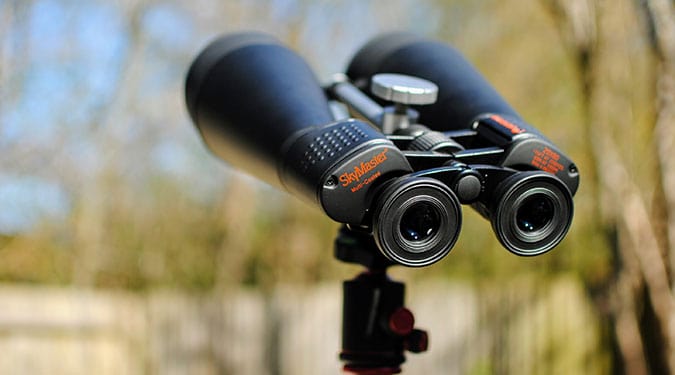
Perhaps you are staring at the sequence of numbers on a pair of binoculars right now, or you have no idea what numbers we are talking about.
In fact, they are called model numbers or binocular zoom numbers.
Learning how to read binocular numbers is simple. You should see a combination of numbers that look like this example: 10×50.
The first number in this figure (10) is what’s called the power of magnification.
What Do the Magnification Numbers Mean on Binoculars?
This number represents how close the object you are viewing will appear in the lenses you are looking through. So the 10 in our example means that the object is 10x closer than they actually are.
And the higher the magnification number, the closer the object appears.
The 8 level of magnification is standard for binoculars, but 12x and higher makes it difficult to establish a clear image just by holding them in your hand.
Binoculars with these higher magnification numbers are typically supported or stabilized on a table or wall.
Objective Lens (Aperture)
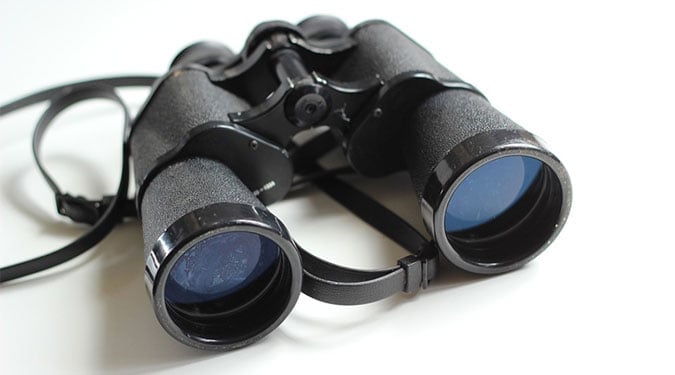
Now that you know what binocular magnification numbers are let’s go back to our example: 10×50. What does the 50 mean?
After the magnification number (10x) comes the objective lens size number or aperture number (50).
The objective lens is displayed in millimeters and signifies the amount of light the lenses are able to capture.
This light is transmitted to the ocular lens and then to your eye, making the object you’re viewing appear brighter than it would on a smaller scale.
When browsing different binoculars, the wider the objective lens, the brighter the object will appear since more light can be captured.
This is especially important in low light conditions, such as looking at the stars in the night sky. The more light that can be gathered and transmitted to your eye, the brighter and clearer the view of the stars.
So if you were to compare a 10×25 binocular with a 10×50 binocular, which one provides the brighter outcome?
The answer is 10×50 with a 50mm objective lens. This lens allows in more light, enabling the user to see objects that are farther away in the night sky.
You may be thinking that bigger must be better when it comes to the objective lens, but that’s not always the case. It comes down to what you want to use binoculars for.
Larger lenses mean a larger, heavier binocular, so you’ll also need to think about a tripod to hold it up. While this is certainly ideal for an astronomer, this isn’t the case for other activities, such as birdwatching.
So What’s the Standard for Binocular Numbers?
As we stated above, 8 is standard for magnification. For the objective lens, the standard is 42mm.
Put together; it looks like this on a pair of binoculars: 8×42
Angle of View (AoV)
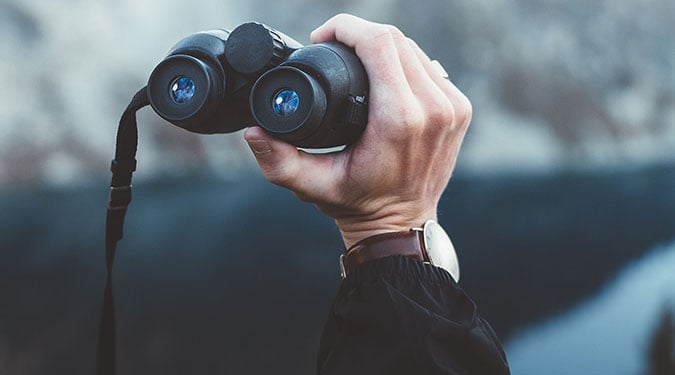
Angle of view (AoV) refers to the amount of scenery that is visible on a horizontal scale when looking through binoculars.
AoV is indicated in degrees, with anything over six degrees considered ideal. The higher the AoV, the wider the area you will see through your lenses.
Sometimes you might see an especially high number, such as 72 degrees, but this pertains to the actual AoV or when you multiply the AoV by the magnification number.
For example, if your binocular displays 10×50 with a 7.2 degree AoV, you get an actual AoV of 72 degrees (10 x 7.2).
Field of View
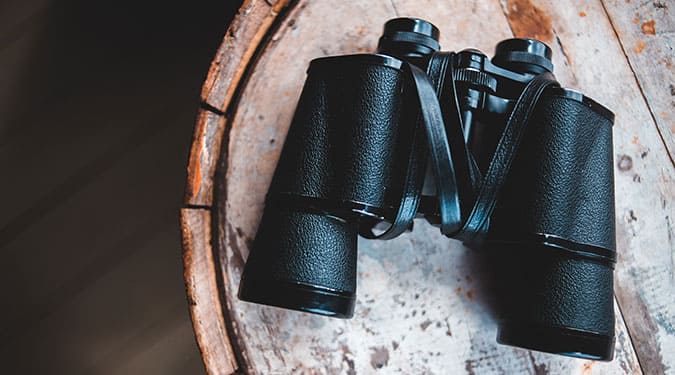
The field of view (FoV) also pertains to the amount of scenery displayed horizontally, but this is not expressed in degrees. Instead, you’ll see it in feet per 1,000 yards or meters per 1,000 meters.
The logic is the same as AoV, so the higher the number, the wider the view when looking through the binocular lenses. A standard FoV would be around 300 feet.
Other Binocular Number Meanings
The Best Numbers for Binoculars Depending on the Activity
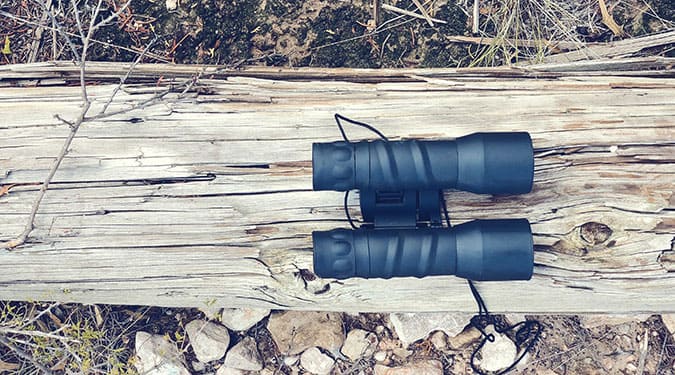
Knowing what binocular numbers mean is important for choosing the best model for your personal use. Here are examples of the best binocular numbers according to the activity.
Backpacking and Hiking
Saving space and traveling light is a priority when backpacking or hiking, so you’ll want to look at compact binoculars that are portable and don’t weigh much.
You’ll want to look for a magnification of 8 or 10 with an objective lens around 25 or 28.
Whale Watching and Other Wildlife Viewings
Compact binoculars are suitable, or you might prefer a model with a higher magnification number and a midsize objective lens since you’ll probably be farther away from the animal.
Astronomy/ Stargazing
You’re going to want to break out the big guns for this type of activity; at least, you’ll want a larger objective lens for enhanced brightness in the dark.
Remember, you may need to invest in a tripod to stabilize your binoculars.
Kayak, Canoe, or SUP
Choose compact binoculars with a lower magnification since objects are typically closer up when you’re on the water. A magnification of 8x or less should suffice for clear viewing.
Birdwatching
A quality midsize or full-size model should do the trick. Popular birding sizes have an objective lens of 32 or 42.
A standard 8x magnification provides a wider field of view, which can be helpful for spotting birds.
| Backpacking & Hiking | Whale Watching/Wildlife | Astronomy/ Stargazing | Kayak, canoe, or SUP | Birdwatching |
| 8×28 10×25 10×28 | 8×32 8×32 10×32 10×42 | 10×42 10×50 | 8×32 | 8×32 8×42 |
Got All of That? A Final Review of What Binoculars Numbers Mean
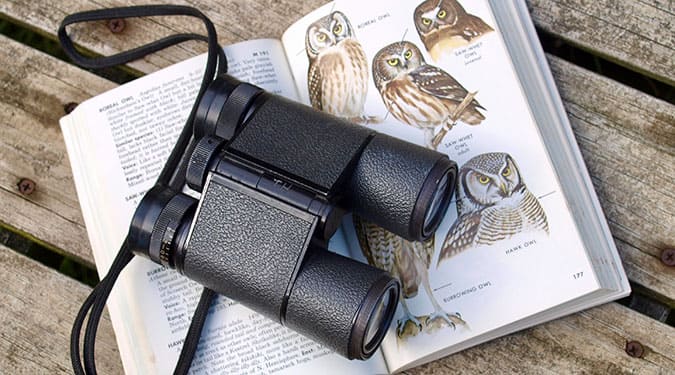
Now that you are crystal clear on understanding binocular numbers, here’s a quick recap to put it all into perspective.
Final Thoughts: What Do Binocular Numbers Mean?
You’ll never have to ask the question “what do binocular numbers mean” ever again.
We covered the main numbers and degrees that you’ll experience with most binoculars to get the best possible view for hunting, birdwatching, and more.
For standard use, look for numbers displayed as 8×42, and you should be able to enjoy a variety of activities.
References & Resources: